Key Takeaways
- Bitcoin, launched in 2009 by Satoshi Nakamoto, is the world’s first decentralized, peer-to-peer digital currency operating without intermediaries.
- It uses a proof-of-work consensus mechanism and a fixed supply of 21 million coins, with halvings reducing issuance every four years.
- Bitcoin’s price has seen dramatic volatility, peaking at $109,100.30 in January 2025, driven by institutional adoption and regulatory developments.
- The Trump administration’s 2025 Strategic Bitcoin Reserve aims to make the U.S. a global crypto hub, boosting Bitcoin’s mainstream credibility.
- Challenges like scalability, energy consumption, and regulatory scrutiny could impact Bitcoin’s future growth and adoption.
In March 2025, Bitcoin remains a focal point in global finance, especially after the Trump administration’s recent push to establish a Strategic Bitcoin Reserve, signaling strong U.S. support for cryptocurrencies. Bitcoin (BTC) is a decentralized digital currency that enables peer-to-peer transactions without intermediaries, secured by cryptography and a network of nodes, miners, and developers. As of March 20, 2025, Bitcoin’s current price is $84,698.95, with a circulating supply of 19.84 million BTC, resulting in a market cap of $1.68 trillion.
What Is Bitcoin?
Bitcoin is a decentralized digital currency and payment network that operates without the need for a central authority. It enables peer-to-peer transactions across a distributed system, allowing anyone with an internet connection to send or receive payments directly. What makes Bitcoin unique is its design: it’s permissionless, censorship-resistant, and governed by a global consensus rather than any single entity.
At the core of the Bitcoin network is a scarce, programmable native currency, Bitcoin (BTC), whose supply is mathematically limited. The system is maintained by a network of participants, including miners, full nodes, and developers. These roles collectively uphold the integrity and security of the network through cryptography and game theory.
Bitcoin functions as more than just a payment method—it represents a new kind of monetary system. Its rules are defined by a shared protocol and upheld by the people who choose to participate, forming what’s often referred to as a “social contract.” This contract isn’t enforced by law but by economic incentives and the voluntary agreement of its users. As a result, Bitcoin has emerged as a decentralized financial institution, evolving through the collaborative effort of its global community.
Who Is Behind Bitcoin?
Bitcoin was created by the pseudonymous Satoshi Nakamoto, whose identity remains unknown despite extensive speculation. Nakamoto published the Bitcoin whitepaper in October 2008 and mined the genesis block in January 2009, embedding a message critiquing centralized banking. In 2010, Nakamoto handed control to developer Gavin Andresen, who later became a lead at the Bitcoin Foundation before disappearing from public involvement. Bitcoin has no central team or executives; it’s maintained by a global community of developers, with over 750 contributors to its GitHub repository, including key figures like Wladimir J. van der Laan and Pieter Wuille.
As an open-source project, Bitcoin didn’t rely on traditional funding like an ICO. Its growth has been organic, though institutional players like MicroStrategy (holding 252,220 BTC) and ETF providers such as BlackRock have significantly invested in Bitcoin, driving mainstream adoption.
How Does Bitcoin Work? Technical Explanation
Bitcoin operates on a decentralized blockchain, a public ledger where transactions are recorded in blocks and verified through a proof-of-work (PoW) consensus mechanism. Miners compete to solve cryptographic puzzles, adding new blocks and earning rewards—currently 3.125 BTC per block after the April 2024 halving. Unlike traditional banking systems, this process secures the network and ensures no single entity controls it. Bitcoin’s fixed supply of 21 million coins, coded into its protocol, contrasts with fiat currencies prone to inflation. Transactions are pseudonymous, linked to wallet addresses rather than real-world identities, and are validated by nodes to prevent double-spending. Compared to Ethereum, which supports smart contracts, Bitcoin focuses on being a store of value and a medium of exchange. Upgrades like SegWit (2017) and Taproot (2021) have improved scalability and privacy, enabling features like the Lightning Network for faster, cheaper transactions and Ordinals for embedding data like NFTs.
Current Status of Bitcoin in the Wider Ecosystem
Bitcoin holds a dominant position in the cryptocurrency ecosystem, often dubbed “digital gold” for its store-of-value properties. It commands over 50% of the total crypto market cap, which exceeds $2 trillion as of March 2025. Its reputation as a hedge against inflation has attracted institutional investors, with companies like MicroStrategy and Tesla holding significant BTC reserves. Spot Bitcoin ETFs, approved in 2024, manage over $60 billion in assets, reflecting growing mainstream acceptance. However, Bitcoin’s high energy consumption—around 150 TWh annually—has drawn criticism, though its community argues that much of this comes from renewable sources. Bitcoin’s standing is further bolstered by the U.S. government’s pro-crypto stance under the Trump administration, which has positioned it as a strategic asset.
BTC Price History
Bitcoin’s price history is marked by extreme volatility and significant milestones. It started at $0 in 2009, with the first recorded transaction in 2010 valuing 10,000 BTC at $50 (two pizzas). By 2013, it surged to $230, driven by early retail interest and the first Bitcoin ATM. The 2017 bull run saw BTC hit $20,000 amid the ICO boom, followed by a 2018 crash to $3,100. In 2021, prices soared to $64,863.10, fueled by Tesla’s $1.5 billion investment and Coinbase’s IPO, before dipping to $29,000 in 2022 after the FTX collapse. The 2024 halving and ETF approvals pushed Bitcoin to $73,737.94 in March, and it broke $100,000 in December 2024 after Trump’s crypto-friendly election win. A peak of $109,100.30 came on January 20, 2025, but a 22.54% correction followed, bringing the price to $84,698.95 by March 20, 2025, amid profit-taking and macroeconomic uncertainty.
Current Data & Statistics About Bitcoin
- Market Cap: $1.68 trillion, over 50% of the total crypto market.
- Circulating Supply: 19.84 million BTC, with a maximum of 21 million.
- 24-Hour Trading Volume: $26.33 billion, reflecting high liquidity.
- Lightning Network Capacity: 5,000 BTC (around $424 million), enabling fast microtransactions.
- Mining Difficulty: Reached an all-time high of 92.67 trillion in February 2025, indicating robust network security.
The Future of Bitcoin
Bitcoin’s future hinges on several factors. Scalability remains a challenge, as its 7 transactions per second limit pales compared to Ethereum’s 30 or Visa’s thousands, though the Lightning Network helps. Energy consumption criticism could lead to regulatory pushback; one expert notes that Bitcoin’s carbon footprint may face stricter scrutiny as global sustainability goals tighten. Government attention, particularly the U.S.’s Strategic Bitcoin Reserve, could drive adoption but also risks overregulation. China’s 2021 mining ban displaced 50% of the global hash rate, showing the impact of policy shifts. With more versatile smart contract capabilities, competitors like Ethereum challenge Bitcoin’s dominance in DeFi applications. The Trump administration plans to expand the reserve and establish stablecoin regulations, potentially solidifying Bitcoin’s role in finance. However, quantum computing poses a long-term threat to its cryptography, though this is likely decades away.
Bitcoin has evolved from a 2009 experiment into a global financial powerhouse, driven by its decentralized design, fixed supply, and growing institutional support. Its price volatility, technological upgrades like the Lightning Network, and the U.S. government’s Strategic Bitcoin Reserve highlight its transformative potential. Despite challenges like scalability, energy concerns, and regulatory hurdles, Bitcoin’s resilience and mainstream adoption point to a promising future as a cornerstone of digital finance.



